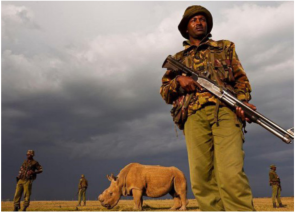By Thokozani Mazibuko
Man killed, coincidentally where his dad died
- The 30 year-old was shot, killed while poaching
- Father too was also shot, killed while poaching in the same place- sources
- REPS confirms fatality
The people of the area of Tikhuba under the Matsanjeni North Inkhundla are still reeling in shock after a 30-year-old man was shot and killed while poaching at the Bar Circle Game Reserve.
Shockingly, according to impeccable sources, the man had gone hunting illegally in the same place where his biological father was also shot and killed for the same offence, a few years ago.
ALSO READ: Man tried to stage dad’s…
“This tragedy and coincidence have left us dumbfounded, we have not recovered from the killing of his father at the same reserve and now we must bury him, the same way we did to his father.

This is the same place where his father had gone hunting with another resident of this area when they were bombarded with a hail of bullets from the rangers,” said the source to Eswatini Daily News.
The source disclosed that they were shocked because the deceased was the one who led the team to perform the ritual at the same place, something which is usually done to fetch the spirit of people who met their deaths away from home.
“Now the same person goes hunting illegally in the same place where his father was killed, that left us dumbfounded,” lamented the resident who preferred to remain anonymous.
ALSO READ: Cop, 2 men caught with…
Deputy Police Information and Communication Officer, Assistant Superintendent, Nosipho Mnguni confirmed the incident.
“On 26/05/2024 at 1600 hours, a 30-year-old man of Tikhuba died after being shot while poaching at Bar Circle Game Reserve,” Mnguni said.
It should be noted that poaching can be a serious threat to many wild species, particularly those protected in wildlife preserves or national parks.
Many animal species have been limited in range or depleted in numbers, sometimes to the point of extinction, by the depredations of market hunters and unregulated sportsmen.
It is worth noting that illegal wildlife trade is driven by high-profit margins, and, in many cases, the high prices paid for rare species.
Vulnerable wild animals are pushed further to the edge of extinction when nature can’t replenish their stocks to keep up with the rate of human consumption.